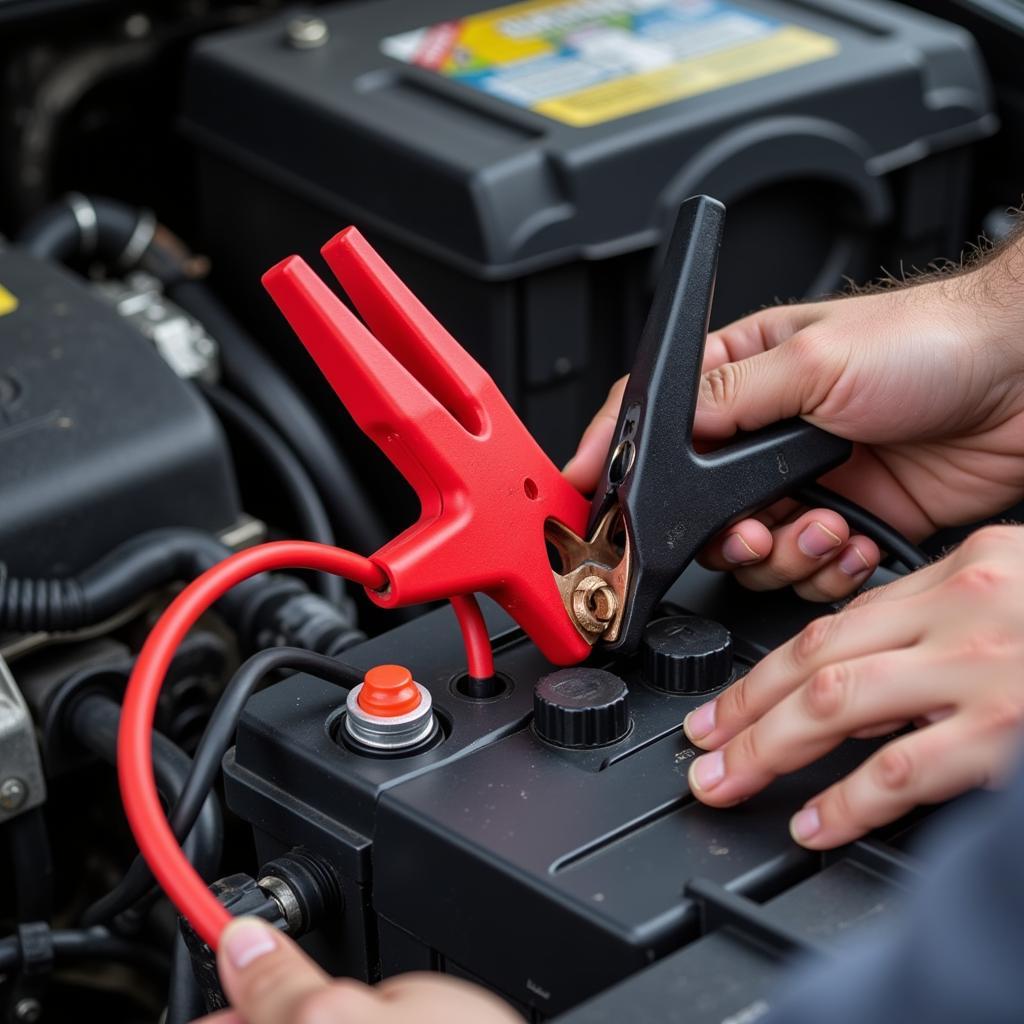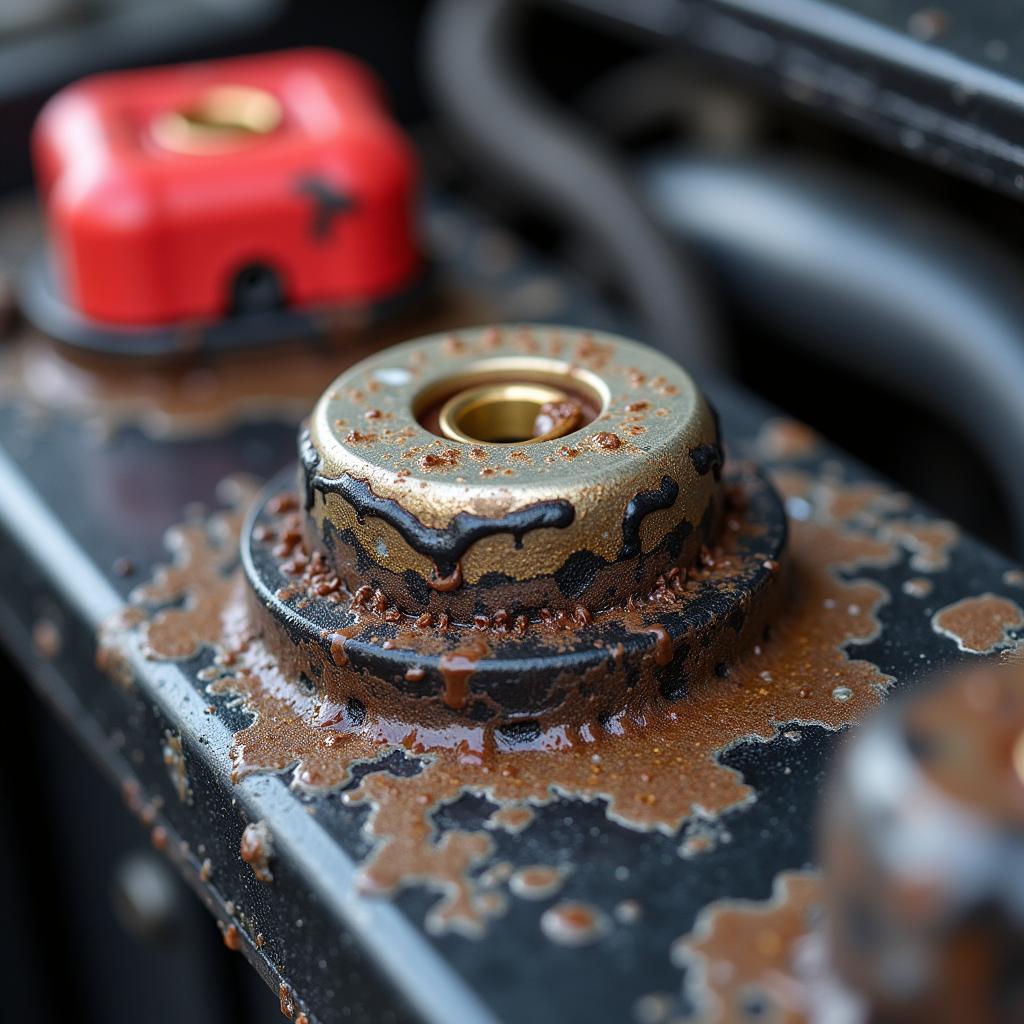Your car won’t start, even with jumper cables? This frustrating situation is more common than you think, and thankfully, often solvable without a costly tow. This guide covers everything from the basics to advanced diagnostics for when your car won’t start with jumper cables.
 Car Jumper Cables Connected Incorrectly
Car Jumper Cables Connected Incorrectly
Why Jumper Cables Sometimes Fail
Jumper cables are a lifesaver, but they’re not magic. They work by providing a temporary boost of power from a working battery to a dead one, allowing your car to start. If your car still won’t start with jumper cables, several factors could be at play:
- Dead Donor Battery: The “good” battery might not have enough juice.
- Faulty Jumper Cables: Corroded clamps or damaged wires can prevent proper current flow.
- Bad Connection: Cables must be securely attached to the correct battery terminals.
- Extreme Temperatures: Cold weather can severely impact battery performance.
- Underlying Car Problems: The issue might not be the battery at all.
 Corroded Car Battery Terminals
Corroded Car Battery Terminals
Troubleshooting a Car That Won’t Start With Jumper Cables
Let’s break down a step-by-step process to diagnose and hopefully fix your starting problem:
- Check the Obvious: Ensure the jumper cables are connected correctly (positive to positive, negative to negative). A loose connection can be the culprit.
- Assess the Donor Battery: Try using a different vehicle for jump-starting. If the second vehicle works, your original donor battery was likely the issue. charging a dead car battery with a charger will fix this.
- Inspect the Cables: Examine the jumper cables for damage. Replace them if you see any fraying or corrosion.
- Clean the Terminals: Clean the battery terminals with a wire brush and baking soda solution to remove any corrosion.
- Try Again: After checking and cleaning, attempt to jump-start your car again.
What if the Car Still Won’t Start?
If the car still won’t crank even after trying the above steps, the issue might be more complex than a dead battery. It could be:
- A Faulty Starter: A clicking sound when you turn the key is a telltale sign of a bad starter. You might want to check out my car is clicking and wont start.
- Alternator Problems: The alternator charges the battery while the engine runs. A faulty alternator could lead to a dead battery.
- Ignition System Issues: Problems with the ignition system can prevent the car from starting.
- Fuel System Problems: While less common, issues with the fuel pump or fuel filter could also be the problem.
“A surprising number of jump-start failures stem from overlooked basics like dirty battery terminals or faulty cables,” says David Miller, Automotive Electrical Engineer. “Always start with the simple checks before assuming a major component failure.”
Advanced Diagnostics and Remote Solutions
For complex issues, advanced diagnostic tools and remote programming can be incredibly helpful. Services like remote software installation can address certain electronic control unit (ECU) problems that might prevent the car from starting. Consider seeking professional help if your car won’t start even after basic troubleshooting. [jump starting car not working](https://cardiagtech.shop/jump-starting-car-not working/). It may also be a good idea to read up on jumping your car.
When to Call a Professional
If you’ve tried everything and your car still won’t start with jumper cables, it’s time to call a professional. A qualified automotive technician can diagnose the problem accurately and recommend the necessary repairs.
“Remote diagnostics and programming are revolutionizing car repair,” adds Sarah Chen, Automotive Software Engineer. “By accessing a vehicle’s computer remotely, we can often identify and fix issues faster and more efficiently.” If your car lights are on but wont start, that could be another indicator of a more serious problem.
Conclusion
A car that won’t start with jumper cables can be a frustrating experience. However, by following the troubleshooting steps outlined in this guide and understanding the potential underlying issues, you can often resolve the problem yourself or make an informed decision about seeking professional help. Don’t forget to double-check those cables and clean those terminals!
FAQ
-
How long should I leave the jumper cables connected? Typically, a few minutes is enough to transfer sufficient charge.
-
Can jump-starting damage my car? Incorrectly connecting the cables can damage your car’s electrical system.
-
Is it safe to jump-start a car in the rain? Exercise extra caution in wet conditions, ensuring cables and connections are dry.
-
What if my car clicks but doesn’t start after jump-starting? This could indicate a faulty starter or other electrical issues.
-
Why is my car battery draining so quickly? Several reasons include a faulty alternator, parasitic drain, or simply an old battery.
-
Can I jump-start a car with a completely dead battery? A completely dead battery might not accept a charge and require replacement.
-
How can I prevent my car battery from dying? Regular maintenance, avoiding short trips, and disconnecting electronics when not in use can help.

